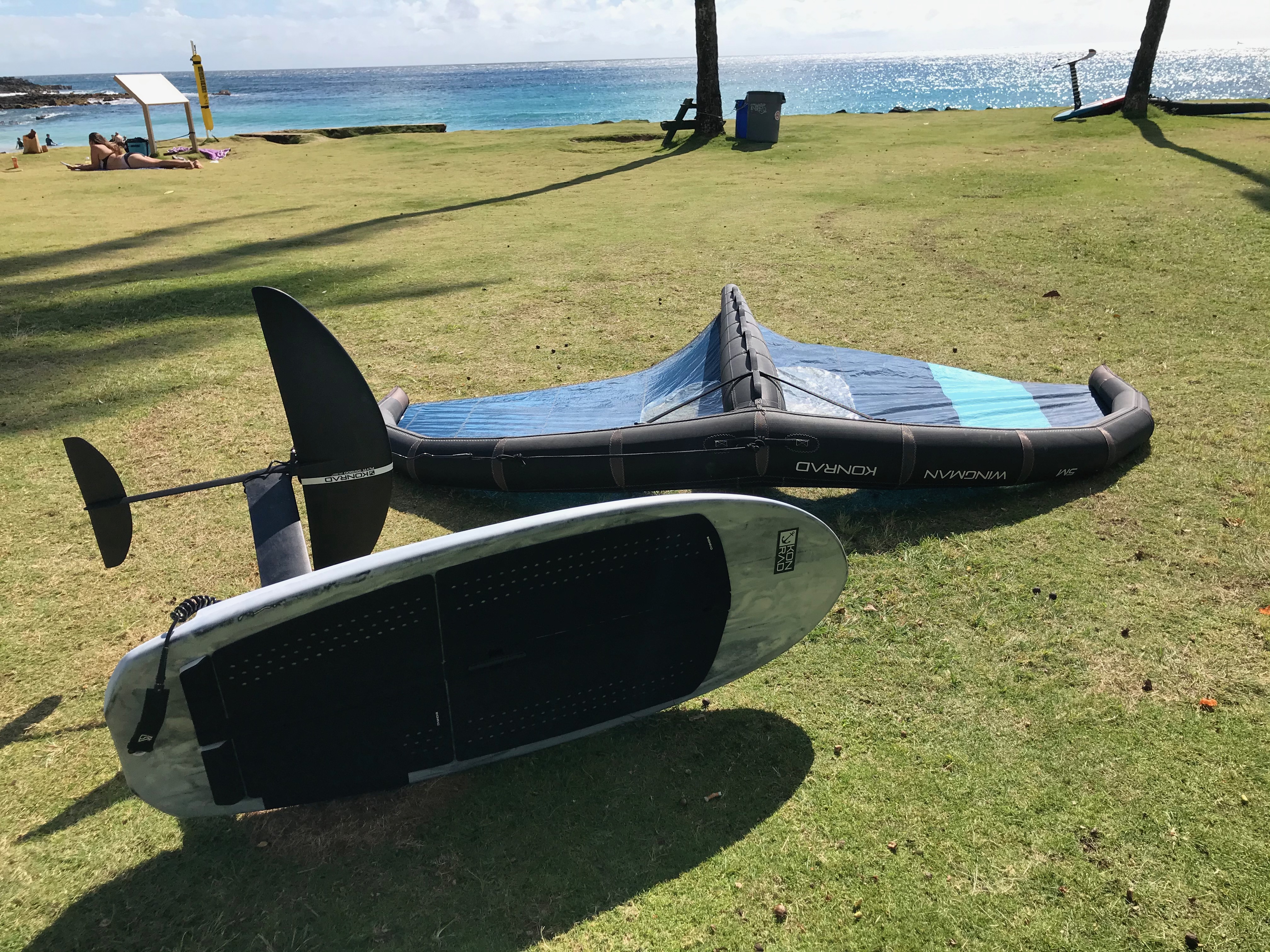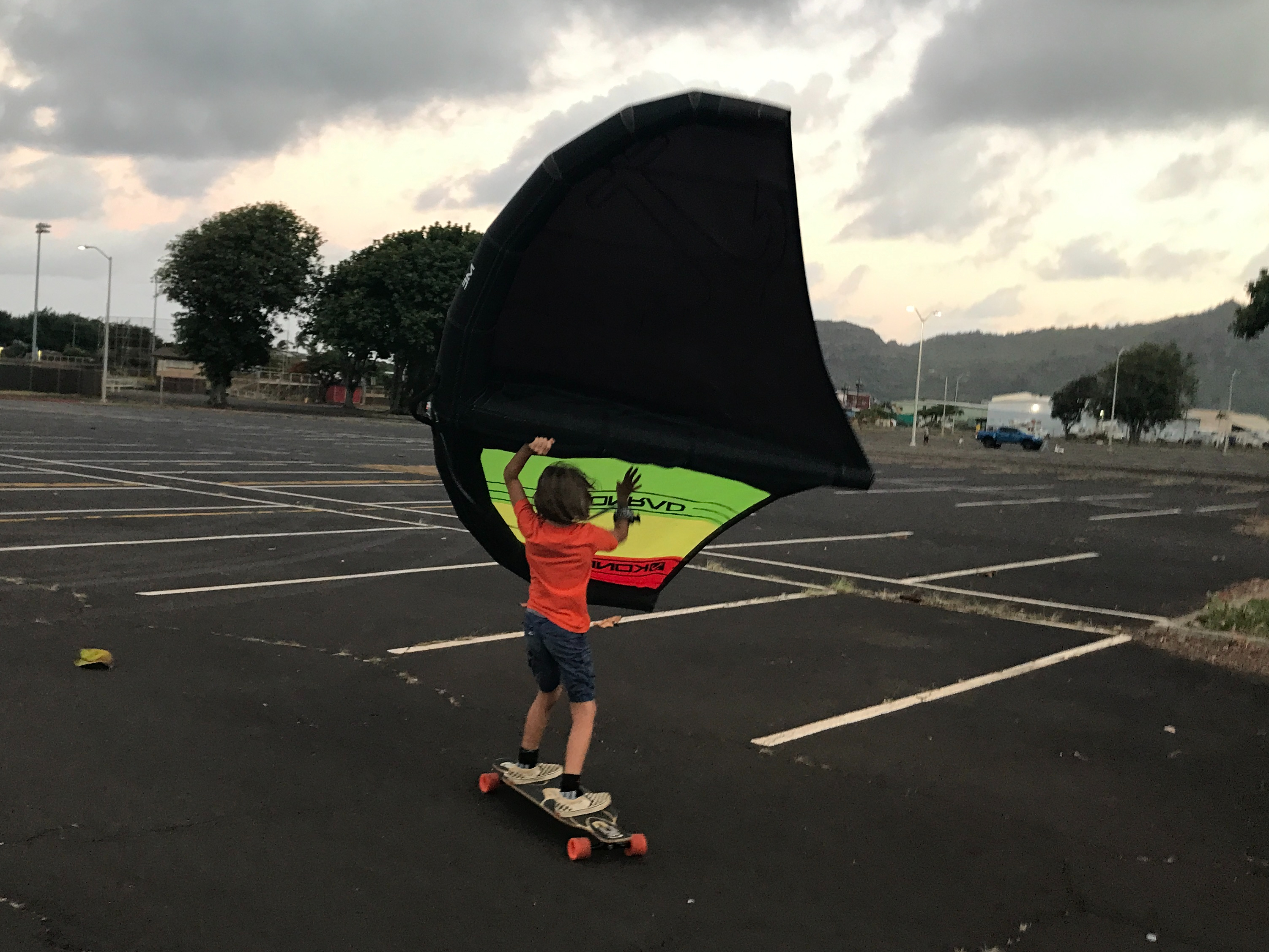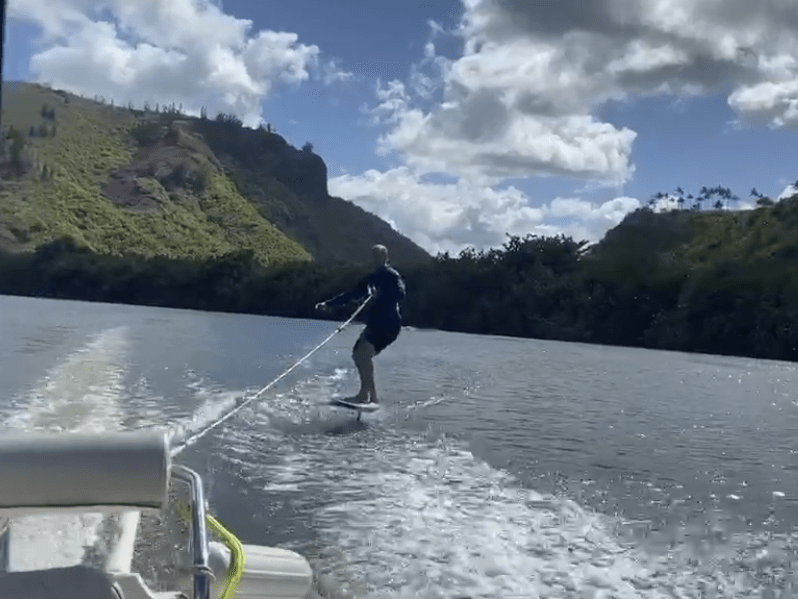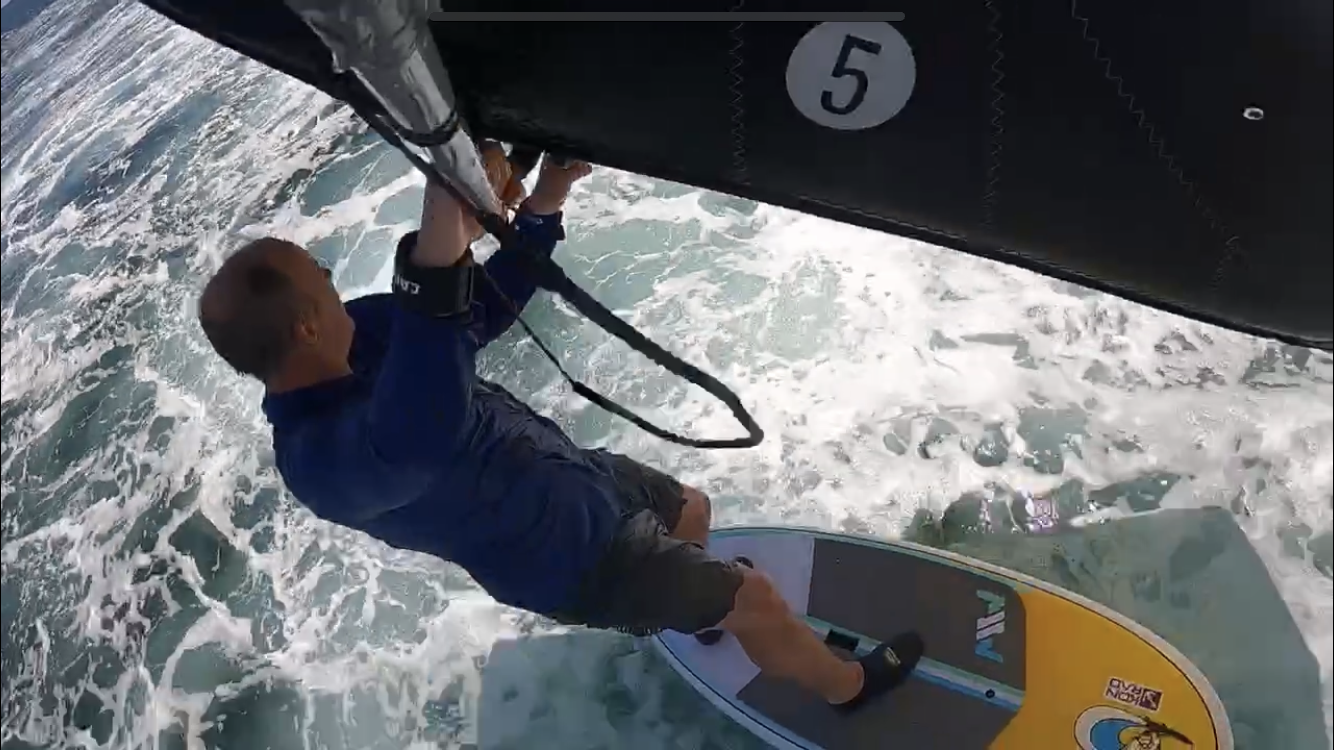Introduction to Wing Foiling
Although it’s been on the wind sports outskirts since at least the eighties, the hand held wing (also known as wing surfer, wind wing, hand wing, wing ding and maybe a few other names) just made a huge comeback when it got coupled with a big winged hydrofoil just a few years ago. With a mind-blowing pace of advancements, wing foiling first saw some early adopters in 2019, soon followed by big air jumping, and now seeing young guns performing loops and spins. Having 30+ years of experience among the various wind sports, I have to admit there is a new magical feeling to wing foiling, smoothly flowing 2 feet above the chop, and then silently gliding on a non-breaking wave, while keeping everything in balance.

What it is:
Essentially just a hand-held sail with inflatable bladders (similar to kitesurfing kites) for shape and floatability, a shorter (about 5-7’) foil board with lots of volume, and a hydrofoil set, wing foiling cuts down on the pieces and parts from its two other wind sport cousins – windsurfing and kitesurfing. The incredible marriage works so well because you can generate enough speed pumping the wing and get up on foil (translates to a smaller wing size compared to kitesurfing or windsurfing), then you only need a fraction of the wing’s push power to stay on foil, and you can easily depower the wing overhead or behind as you soar ahead and pushed along by a wave. The combo also opens up beaches that have traditionally not been kitesurf or windsurf friendly due to crowds, wind direction/strength, or poor launch area.
The gear:

For the places where ‘nukin’ winds’ is not part of the regular vernacular (for the rest of the world outside of Maui, Hood River, Bikini Atoll, etc) a 5 square meter (m2) wing works incredibly well for wing foiling in ~13-20mph wind for the average size 170lb person, those plus or minus thirty pounds should consider going up or down a square meter in wing size depending on typical wind conditions. I definitely it's better to spend a little more for the latest models of wings, as the early versions have much less power, range and durability.
For the same size person, a 120L wing or SUP foil board is generally considered the best place to start along with a front medium aspect foil wing with about 2000cm2 or 300in2 of surface area. As the wind and skill level increases, riders typically are ready to drop down quickly (maybe 10 sessions) in board and foil size, so a skilled kite or windsurf foiler could probably start on a 100L board and 1600cm2 foil, and then even progress soon to the faster high aspect foil wings. I feel the Konrad alloy foil sets Konrad Foil are the perfect foil to start winging, at about half the price of full carbon sets, with all the top-end quality of more pricey sets. It’s a foil set that will be the go-to for years to come. A high aspect wing about 1000cm2 is the all-around size for more advanced riders. Local classified ads tend to have a lot of bigger board and wing sizes as riders progress and move down. But I would advise that you could go well-used (cheaper) on a first board, but it’s best to pay a little more for a quality foil system. After all, that is what your are really riding while wing foiling. One great board to start is the 115L Naish board
Other useful pieces of gear are neoprene knee covers (or a full wetsuit) and booties. My first board I learned on had a rougher deck pad and I rubbed an awful lot of skin off my toes and knees falling off a few dozen times and climbing back on before even standing up. An impact vest or PFD and helmet are also good ideas in the beginning.
The skill set:

For wing foiling, there are two skill sets to learn: wing handling and foiling.
Windsurfers and kitesurfers will have a leg up on the wing handling, and a little beach practice will probably be enough to get the basics. Otherwise, it’s best to practice the wing handling on a 160L+ SUP (but not too big that you can’t sink the windward rail to head upwind otherwise attach a center keel fin like a daggerboard) and/or on a skateboard in a big parking lot. Two key points for windsport newbies: 1. Keep your back to the wind, and 2. Front hand on the wing controls direction (move the wing forward of centerline to turn downwind, move the wing backward to turn upwind), and back hand controls the power (pull back hand in for more power). Once you can generate power, gaining speed on the board, pump the wing to go faster, and practice your footwork. After you can consistently head up wind, you are ready to move on to the next skill set.

Conventional wisdom says the easiest way to learn foiling is behind a boat on flat water with a big foil SUP and big front wing. Once you are able to come up and stay up on foil (in control!) for a minute and steer the foil with just your feet – using only heel/toe pressure, then you are ready to put the two skills together with the wing foil board and the wing, preferably in flat water at first.
Where to go:

The key place to learn winging is a bay with consistent onshore winds about 15mph that will blow you back into the beach and a sandy bottom. On Oahu, Kailua or Waimanalo beach is a great place to learn. Like kitesurfing, the long sandy beaches there are great because the water is over chest deep just off shore and has consistent onshore winds. Other options when first learning is do a downwinder with a buddy. Park one vehicle at the downwind spot and then transport all the gear in another car to the upwind launch spot. For Honolulu, a lot of town wing foilers learned at Lagoon Drive by HNL airport doing downwinders. Most other spots on Oahu are not beginner friendly, and you definitely need to stay up on foil navigating shallow reefs as well as be able to head up wind without a problem.
On Maui, the best place to learn is at Kahului harbor, and there are a lot of great options for schools.
On Kauai, Anini or Hanamaulu is probably the best place to learn. For Anini, you may have to maneuver around turtles and snorkelers and make sure you are near high tide for launch time. Hanamaulu works best on typical trades or more easterly winds. And for Salt Pond and Poipu with the typical side-off shore winds, you have to be ready for a hefty paddle back if the wind drops or your upwind ability is not spot on for both tacks.
I should also mention Damien Leroy’s Youtube channel coming out of Florida that have been consistently great for wing advice. Damien Leroy Youtube

Foil the flow and let’s get flying! Feel free to contact me for any gear advice, lessons on Kauai, or when you are ready to level up your game with a new foil set, wing or board. If you’re on Oahu, be sure to check out the gear at Gnarwall Surf Shop in Kailua, above Cinnamons.




